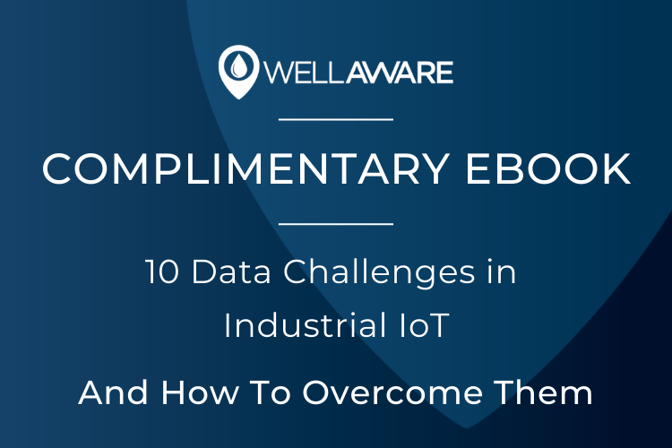
News, Insights, and more on Industrial IoT
 New research from the World Health Organization (WHO) indicates that COVID-19 can spread through microscopic respiratory droplets in the air. These droplets disperse and evaporate relatively quickly outdoors. However, the same is not true indoors.
New research from the World Health Organization (WHO) indicates that COVID-19 can spread through microscopic respiratory droplets in the air. These droplets disperse and evaporate relatively quickly outdoors. However, the same is not true indoors.
There is a much higher risk of the novel coronavirus infecting people inside because aerosols can circulate through air conditioning systems, putting occupants at risk even if they are practicing social distancing. As a result, health experts are starting to emphasize mitigation strategies that remove and kill airborne pathogens within enclosed spaces, especially as leaders consider how to reopen safely.
Several air purifier technologies claim to reduce COVID-19 transmission to some extent. But, how legitimate are these claims? Do air purifiers really work against COVID-19?
The short answer is: YES.
Leading public health institutions are supporting the notion that air purifiers, whether standalone or through HVAC integration, can reduce viral load. When properly installed and maintained, air purifiers can remove infected aerosols from the air and, in some cases, inactivate viruses like COVID-19.
The long answer, of course, is a bit more nuanced.
You can’t install any type of air purification technology and expect it to eliminate SARS-CoV-2 (the virus that causes COVID-19) completely. Your team should know the answers to the following questions before moving forward:

Need more help figuring out the best air cleaning strategy.? Download this eBook now for details on pricing, pros, cons, and safety warnings for the most common purification options.
Different settings call for different types of filters. Private residences, commercial buildings, and industrial sites have unique needs when it comes to air filtration.
For example, air purification in commercial buildings is more complicated than in private homes because building managers have to optimize for occupant health, HVAC efficiency, and material degradation. Industrial sites often produce odors or gases that can reduce worker productivity and make people sick.
When talking about airborne pathogens, specifically, it’s important to understand how filters function. Some are particulate matter filters, while others are designed to disinfect. The most common technologies today for dealing with airborne pathogens are HEPA filters, ultraviolet lights, and air ionizers. We cover each of these in more detail below.
High-efficiency particulate air (HEPA) filters are pleated mechanical filters that remove dust, bacteria, pollen, and other types of particles from the air. To earn a HEPA certification in the U.S., filters must remove 99.97% of PM0.3 particulate matter (particles with a diameter of 0.3 microns or longer). According to one NASA study, HEPA filters are nearly
100% efficient at the 0.01-micron level, which is well below the 0.3-micron standard.
Note: some European certifications only require 80% removal of PM0.3 particulate matter. Be sure to study labels when making purchases.
HEPA filters are capable of catching SARS-CoV-2 aerosols and preventing the novel coronavirus from spreading indoors. The virus that causes COVID is a
pproximately 125 nm, or 0.125 microns in diameter, squarely in the range of HEPA filter effectiveness.
The downside of HEPA filters is that they don’t kill coronaviruses. They only pull particles out of the air. COVID aerosols, bacteria, mold, and other captured particles remain alive on the surfaces of HEPA filters.
A few studies have found that SARS-CoV-2 particles can live on surfaces for days, depending on the material. This is the big problem with HEPA filters to prevent viruses: The people who change HEPA filters are at a very high risk of contracting COVID-19, given that they handle surfaces with potentially high concentrations of the virus.
Germicidal ultraviolet (UV) light is commonly used to disinfect empty spaces and deactivate known pathogens. Oftentimes, organizations integrate UV lights into HVAC systems to destroy bioaerosols as they pass through air conditioning ducts.
Most standalone UV purifiers do not catch aerosols which may contain coronavirus and other microbes. Some filters may employ some form of dust or pollen pre-filter, but unlike HEPA filters, these generally aren’t efficient enough to remove smaller aerosols that may contain the COVID-19 virus.
With the right exposure time, dosage, and wavelength, UV lights can kill SARS-CoV-2 particles. The type of UV radiation we use for disinfecting purposes is UVC.
The problem with most bands of UVC is that they are harmful to humans. The same DNA-destroying power needed to kill coronaviruses causes cancer and cataracts in
humans. So, most exposed UVC lights aren’t viable for occupied buildings.
The big variable to consider is exposure time. UV lights require sufficient exposure time to effectively deactivate viruses. In most cases, up to 30 minutes of exposure time is required to fully destroy microbes. Most standalone UV air purifiers don’t keep the air in place long enough to effectively disinfect aerosols, and UV lights integrated into HVAC systems are really designed to prevent mold and bacteria growth on duct and filter surfaces.
Without sufficient exposure time, UV lights are not particularly effective at destroying coronavirus.
One alternative that is gaining momentum is far-UVC light (207-222 nm). Far-UVC light appears to deactivate pathogens without harming humans. A study conducted in 2018 revealed far-UVC was able to inactivate 95% of H1N1 coronavirus (swine flu). Early reports indicate far-UVC is also effective against SARS-CoV-2. However, more research is needed to confirm these lights are safe and sufficient in occupied buildings.
The challenge for many facilities managers is that they don’t have the capabilities or resources to implement long-exposure UV technology in their spaces. One other consideration: Those who can redesign HVAC infrastructure to accommodate UV lights should be sure to avoid any that produce ozone.
Ionizers emit charged particles, or ions, into the air to help capture contaminants that would otherwise be too small for filters. More specifically, they create negative ions that attract positively charged ions, such as those that carry dust and bacteria, and trap them.
Put simply, it depends on how you look at it. By design, ionizers create static charges on airborne particles, making them “stick” to other things. If they attach to other particles, they get heavier and fall to a surface. Or, they may attach to a surface itself. Either way, virus-laden particles end up on surfaces like floors, walls, chairs, desks, door knobs, and faucets. So while they do technically “catch” coronavirus, they only relocate it to surfaces which still require disinfecting.
Air ionizers do not kill SARS-CoV-2 in aerosol particles. Thus, they prove to be mostly ineffective. While it may help to remove viruses from the air, attaching them to high-touch surfaces without deactivating viruses simply creates higher risks. The pathogens continue to live on surfaces, creating risk for those who clean those areas and materials.
Ionizers can be useful when paired with constant disinfection. However, most facilities can only reasonably disinfect daily. Without a rigid and thorough surface disinfecting regimen (which should be in place regardless of if you use air purifiers), ionizers will not effectively prevent the spread of COVID-19. Between cleans, there is risk that pathogens can build on surfaces quickly, especially in high-traffic areas.
Additionally, most ionizers emit ozone, thus putting occupants at risk. While ionizers may work well for maintaining air quality in certain settings, they are not the best solution for protecting against the spread of COVID-19.
Did You Know? PureAware™ is the only smart air purification service that is safe for humans, destroys up to 99.98% of viruses, and filters 99.97% of PM0.3 particulate matter from the air?

There are a few other types of filters out there that can remove certain molecules from the air. For example, molecular filters use adsorption to trap airborne contaminants on surfaces. Air purifiers built around metal ions may also have antiviral properties.
The challenge with these alternative approaches is that they aren’t widely available for the average consumer. Facilities managers responsible for fortifying schools, office buildings, nursing homes, and other settings will have a hard time finding scalable solutions along these lines for their properties.
 |
 |
 |
While there is still research to be done, different types of air purifiers can help reduce the risk of indoor COVID-19 transmission. But, you need to select the right materials to have total confidence that your building occupants are safe.
Avoid gimmicks and unproven technologies. Use high-quality filters within multi-layer solutions that both capture and destroy airborne pathogens.

Having a data challenge? You're not alone.
Sign up for our blog and receive a free eBook on the 10 data challenges in Industrial IoT and how to overcome them.
Have a Question?